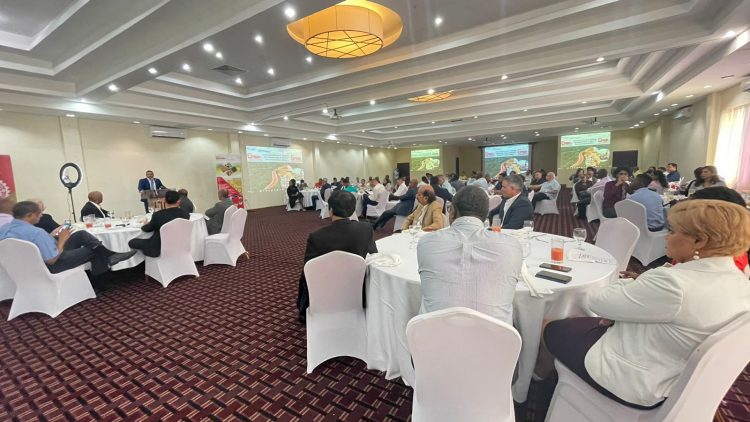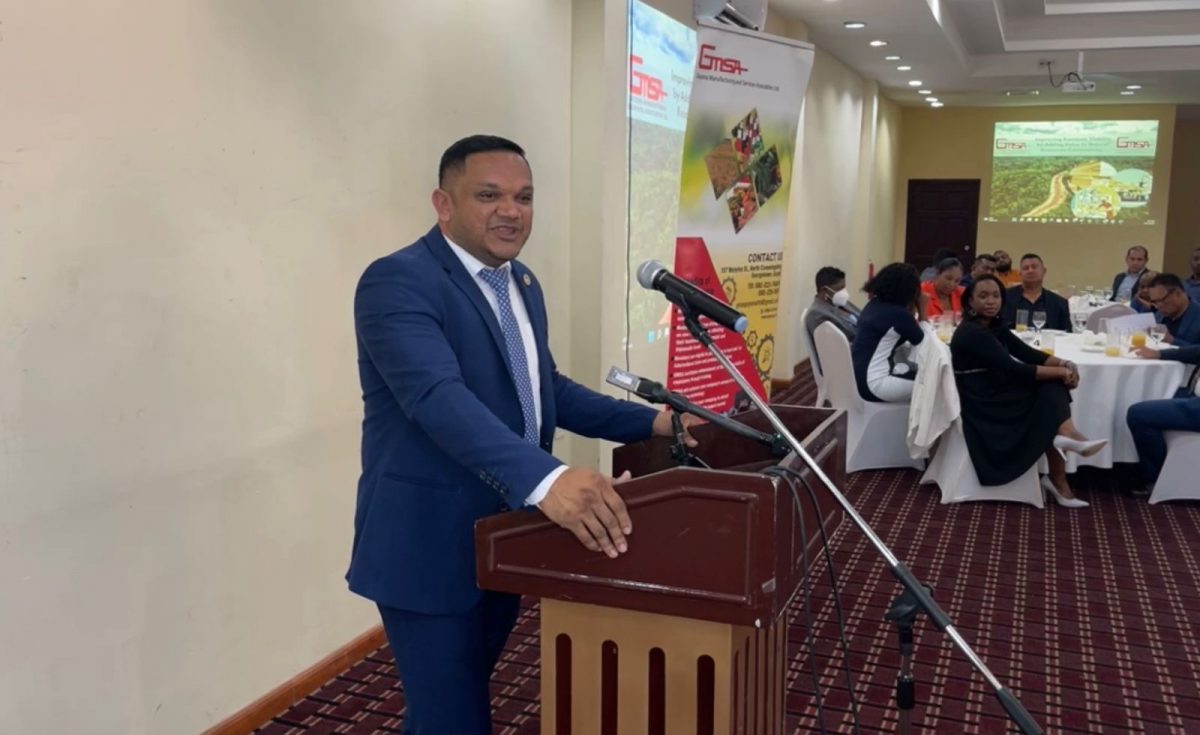Minister of Natural Resources, Vickram Bharrat on Tuesday lamented the ongoing poor recovery rates in the gold and timber industries.
The guest speaker at the Guyana Manufacturing and Services Association business luncheon, held at the Princess Hotel, Providence, Bharrat said that effective recovery is a major challenge.
“The major problem in the mining sector, and forestry sector as well, is the rate of recovery. In mining, for example, the common term of when you do a wash down, meaning you extract the gold from the mud or the soil or rocks, the rate of recovery is about 30% to 35%,” he said.

“That is why when some people ask why we don’t enforce the reclamation and reforestation clause in the mining agreement, we can’t. Because many a times you find small miners go and work the tailings pond over and over because there is still gold there. Because if you recover 35% you still have 65% and that is where our small miners and pork knockers they get their gold from,” he added.
The Natural Resources Minister said that maybe Guyana has to explore looking at the usage of “new technology” but ensuring that recovery rates are in the highest possible percentile is what is hoped for and government would have to “look at these things in order to move forward in the sector”. In the forestry sector, he posited, for “every tree that is cut down in the forest, eighty percent of it is wasted”. And when that log is brought out to local sawmills “we only recover about 50% of it”, which suggests, that in actuality, 90% of the log was lost. In cases where about 65 to 67 percent is recovered, it is because those sawmill owners have “retooled” and invested in technologically advanced machinery.
But he noted that in the cutting down of trees, with the right skill sets, the recovery percentage can be higher as is the case in indigenous areas.
“That is where training comes in. When you go to the Indigenous villages, they would tell you that they can recover 80% from a tree and that is because of training,” he said. “That is an area that we can collaborate and work closely on… conduct workshops and training to ensure that there is no shortage of skills in the natural resource sector,” he said.
Mining and logging, according to Bharrat, accounts for 50,000 direct jobs and more than 100,000 indirect jobs, and the focus is to see those increased. Bharrat also said that he would not focus on the oil and gas sector, since key to manufacturing in Guyana is agricultural and forestry produce, although he pointed out that reliable and cheap electricity is a necessary requirement.
“One might ask why we haven’t ventured out into value added…the number one reason is the cost of power generation. They will tell you their number one fear is when they get the light bill from GPL. That has always been one of our biggest problem. The cost of power and the reliability of power,” he said.
As he named agencies such as the Guyana Geology and Mines Commission, the Guyana Fores-try Commission, the Guyana Gold and Diamond Miners Association and his Ministry of Natural Resources, and the Ministry of Agriculture among others, Bharrat said that they could all work together to ensure that value added is greater. “I think that is an area that the ministry, GGDMA, GCCI, the Private Sector… we can collaborate and work on to ensure there is no shortages of skill in the natural resources sector. If we want to move to value added. If we don’t have a skilled work force we have a problem in reaching value added,” he said.
He pointed out that government is “committed to ensuring we develop the non-oil sector” and said that agriculture, especially, will “play a major role” as this country seeks to move forward.
“To add value to our natural resources and local products in general we have to work. Every-where you go, they say Guyana is a rich country because we have a lot of natural resources. So why hasn’t Guyana realized its true potential? It is because we have, for too long, been exporting raw materials instead of developing value added. For decades we have been doing that,” he posited.
Pointing to wood, and using hypothetical numbers, he said that to export a log against lumber or wood products you can see great losses. “Use for example and say that if you export one log you get about US$500. If it is [treated] lumber you get US$2000 and if it is wood products it is US$ 5000. That is the opportunity that exists for us in Guyana because we haven’t fully realized our full and true potential.”
He added “In the agricultural sector, we export our cherries and then we buy back the juice. We export the log and then buy back the furniture, we export raw gold and buy back jewelry, we export the bauxite ore and then buy back the aluminum products”.



